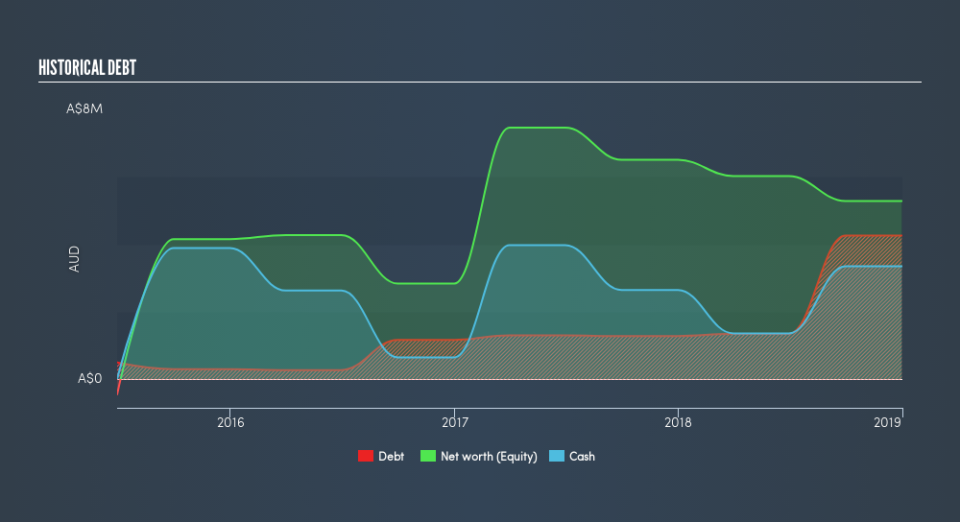How Financially Strong Is Locality Planning Energy Holdings Limited (ASX:LPE)?

Locality Planning Energy Holdings Limited (ASX:LPE) is a small-cap stock with a market capitalization of AU$34m. While investors primarily focus on the growth potential and competitive landscape of the small-cap companies, they end up ignoring a key aspect, which could be the biggest threat to its existence: its financial health. Why is it important? Given that LPE is not presently profitable, it’s essential to understand the current state of its operations and pathway to profitability. The following basic checks can help you get a picture of the company's balance sheet strength. However, this is not a comprehensive overview, so I suggest you dig deeper yourself into LPE here.
Does LPE Produce Much Cash Relative To Its Debt?
LPE's debt levels surged from AU$1.3m to AU$4.3m over the last 12 months , which accounts for long term debt. With this growth in debt, LPE's cash and short-term investments stands at AU$3.4m , ready to be used for running the business. Its negative operating cash flow means calculating cash-to-debt wouldn't be useful. For this article’s sake, I won’t be looking at this today, but you can examine some of LPE’s operating efficiency ratios such as ROA here.
Can LPE pay its short-term liabilities?
With current liabilities at AU$3.2m, the company has maintained a safe level of current assets to meet its obligations, with the current ratio last standing at 2.05x. The current ratio is the number you get when you divide current assets by current liabilities. For Electric Utilities companies, this ratio is within a sensible range as there's enough of a cash buffer without holding too much capital in low return investments.
Can LPE service its debt comfortably?
LPE is a relatively highly levered company with a debt-to-equity of 81%. This is somewhat unusual for small-caps companies, since lenders are often hesitant to provide attractive interest rates to less-established businesses. However, since LPE is currently unprofitable, sustainability of its current state of operations becomes a concern. Maintaining a high level of debt, while revenues are still below costs, can be dangerous as liquidity tends to dry up in unexpected downturns.
Next Steps:
Although LPE’s debt level is towards the higher end of the spectrum, its cash flow coverage seems adequate to meet obligations which means its debt is being efficiently utilised. This may mean this is an optimal capital structure for the business, given that it is also meeting its short-term commitment. Keep in mind I haven't considered other factors such as how LPE has been performing in the past. You should continue to research Locality Planning Energy Holdings to get a more holistic view of the small-cap by looking at:
Historical Performance: What has LPE's returns been like over the past? Go into more detail in the past track record analysis and take a look at the free visual representations of our analysis for more clarity.
Other High-Performing Stocks: Are there other stocks that provide better prospects with proven track records? Explore our free list of these great stocks here.
We aim to bring you long-term focused research analysis driven by fundamental data. Note that our analysis may not factor in the latest price-sensitive company announcements or qualitative material.
If you spot an error that warrants correction, please contact the editor at editorial-team@simplywallst.com. This article by Simply Wall St is general in nature. It does not constitute a recommendation to buy or sell any stock, and does not take account of your objectives, or your financial situation. Simply Wall St has no position in the stocks mentioned. Thank you for reading.

